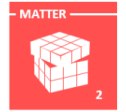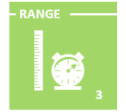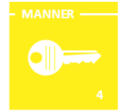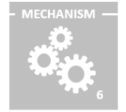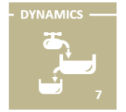Bm² Glossary
The Bm² uses various terms that are common in the business language, or that may come from other backgrounds. Those terms, most of the time, are used in specific ways, or are given restrictive meanings in the frame of the present theory. A few terms are also specific to the Bm². The following glossary gives a definition of those terms in order to clarify the way they are used here or what they refer to.
Search the glossary for entries containing:
-
Definitions (85 entries)
-
Actor : Economic entity that plays a role in the Business System by processing and exchanging values.
-
Business meta-model : a universal framework to describe business models. Conceptual tool to design, analyze and manage a business.
-
Behavioral Field : One of the 4 fields of analysis of the BM at strategic and tactical level. A BM analysis through the Behavioral Field is like a virtual animation ...
-
BM map : Graphical representation of the Performance Scheme of a business, showing the relations between Pillars, Drivers, Levers and Performance.
-
Business : The business of an organization is an economic activity shaped as a system in which it uses, creates, maintains and exchanges value through its operations.
-
Business Activity : The Business Activity of the organization is the aggregate of all major activities it operates to pursue its strategic goal. More than just a compound, the Business Activity ...
-
Business Focus : Organization's position regarding what it does actually (Business Mission), what it does most (Core Businesses) and what it does best (Strategic Capabilities).
-
Business Formula : The way value is handled by processes, in terms of output they produce, value-added they generate, and value generators they use.
-
Business Functions : The overall 3 functions that define the direction of an organization's business in a Value Management perspective: - the Market Function: Value Generation & Delivery ...
-
Business Locus : Organization's position in the Value Network in terms of targets' Needs that it tries to fulfill, customers' Budgets that it tries to capture, Benefits that it tries to ...
-
Business Mission : The Business Mission describes the fundamental nature of the business activity, in terms of value management.
-
Business Operations : Business Operations refer to the regular actions related to the business of the organization. They are linked to the "ordinary course of business". Business Operations are ...
-
Business Rationale : main objectives assigned to processes, in terms of what outcome is expected (output objectives) and in terms of how it should be achieved (operating objectives).
-
Business Model (BM) : The BM is an abstraction of a business, either actual or projected. It is defined for a given Organization, for a given Business and in the context ...
-
Business Scalability : ability of the business to achieve Duplicability and Leverageability for its processes, following some calibration with business scales.
-
Business System : The Business System is the arrangement of all the components that allow and are involved in business operations. Understanding the Business System is defining the tactical level of ...
-
Business Strategy : A Business Strategy is a general position, pattern and plan adopted by an organization to operate its business.
-
Business Velocity : ability of the business to achieve Frequency and Parallelism for its processes, following some synchrony with business cycles.
-
Capture Super-Process : One of the 3 Super-Processes. The Capture Super-Process aims at contracting with external actors to capture value through transactions. Its output is the Captured Value . Also called ...
-
Competitive Advantage Profile : the way the organization plays the business game in terms of Competitiveness, either through offer differentiation (Market CAP), capture differentiation (Capture CAP) or lock-in (Industry CAP).
-
Captured Value : Outcome of the Capture Super-Process. The Captured Value consists in the Revenues the organization gets from its customers and in the Supplies it gets from different actors (Sources). ...
-
Competitiveness : The "Competitiveness" element of the Bm² defines how the organization stands, to face competition regarding transactions. Defining the Competitiveness element is qualifying the manner of being competitive.
-
Channels : Routes through which values are exchanged or processed by actors. There are three types of Channels: Sourcing Channels, Targeting Channels and Operating Channels.
-
Concept : The Concept layer consists in the properties of the business elements and the way they interact. Context, Content and Concept are three distinct layers of a BM allowing a ...
-
Content : The Content layer consists in the nature of the elements that are involved in the business. Context, Content and Concept are three distinct layers of a BM allowing a ...
-
Context : The Context layer consists in the framework in which the business stands. Context, Content and Concept are three distinct layers of a BM allowing a transversal approach of its ...
-
Core Business : A Core Business is an actual functional specialty , or, more accurately, a "métier". An organization usually has several core businesses.
-
Costs : Amounts of money paid by the organization in a transaction, in exchange of supplies.
-
Critical Success Factor (CSF) : CSFs are internal or external factors on which the organization has some control, and that have direct and serious impact on the effectiveness of its business. ...
-
Cycles : The "Cycles" element defines when the activity of the organization takes place, with regard to existing cycles of the economic web where it operates. Defining the Cycles element is ...
-
Domains : The "Domains" element defines where the organization positions itself in the economic web where it operates. Defining the Domains element is setting the operational arena of the BM. ...
-
Drivers : Drivers may be attributes of some elements of the Business System, but more generally mechanisms and dynamics between such elements, or mechanisms and dynamics between such elements and external ...
-
Dynamics : The Dynamics of the Business System is part of the Behavioral Field of the business, at a tactical level. "Dynamics" is one of the 7 Blocks of ...
-
Effectiveness : The "Effectiveness" element of the Bm 2 defines how the organization stands, in order to handle critical success factors regarding processes. Defining the Effectiveness element is qualifying the manner ...
-
Efficiency : The "Efficiency" element of the Bm 2 defines how the BM of the organization stands, to ensure business performance. Defining the Efficiency element is qualifying the manner of being ...
-
Financial Value : The "Financial Value" element is a building block of the Business System. It is represented in the Tactical View (general) of the Bm 2 , and is composed ...
-
Functional Field : One of the 4 fields of analysis of the BM at strategic and tactical level. A BM analysis through the Functional Field is like a virtual flowchart presenting ...
-
Industry Super-Process : One of the 3 Super-Processes. The Industry Super-Process aims at integrating and maintaining the valuable resources for the organization. Its output is the Integrated Value . Also called ...
-
Integrated Value : Output of the Industry Super-Process. The Integrated Value consists in the Resources of the organization (except financial resources).
-
Manner : The Manner of the Business Activity is part of the Postural Field of the business ("How to play the game"). "Manner" is one of the 7 Blocks ...
-
Levers : Levers are elements of the Business System, or some of their attributes, that can be modified, removed or iniciated, in order to ensure flexibility to the BM: securing changes, ...
-
Market Super-Process : One of the 3 Super-Processes. The Market Super-Process aims at generating and delivering value to the market. Its output is the Target Value . Also called VG&D Super-Process ...
-
Matter : The Matter of the Business Activity is part of the Functional Field of the business, at a strategic level. "Matter" is one of the 7 Blocks of ...
-
Mechanism : The Mechanism of the Business System is part of the Functional Field of the business, at a tactical level. "Mechanism" is one of the 7 Blocks of ...
-
Nature : The "Nature" element defines who performs the Business Activity, and consists in the fundamental characteristics of the organization in that respect. It is composed by the Mission, the Core ...
-
Objectives : The "Objectives" element of the Bm 2 defines why the general processes of the Business Activity are performed, and why they should be performed in a certain way. ...
-
Operational Advantage Profile : the way the organization plays the business game in terms of Effectiveness, handling specific Critical Success Factors (CSF).
-
Operating Channels : Activities through which values are processed by the Value Manager (Process perspective). The "Operating Channels" element is a building block of the Business System. It is ...
-
Operating Schemes : Patterns following which values are processed by the Value Manager (Process perspective). The "Operating Schemes" element is a building block of the Business System. It is ...
-
Operational Value : The Operational Value element is a building block of the Business System. It is represented in the Tactical View (general) of the Bm 2 . The Operational Value ...
-
Organization : An organization is a structured entity or set of entities, that has capabilities to operate a business, and has significant authority and control over its operations.
-
Performance : Level of achievement of business objectives. Performance is the ultimate indicator for a BM.
-
Performance Scheme : the way the organization plays the business game in terms of Efficiency, through Business System's Strength, Fitness or Flexibility.
-
Pillars : Pillars are the elements of the Business System, or some of their characteristics, that empower business Drivers. Together with Drivers and Levers, Pillars constitute the three elements of BM ...
-
Positional Field : One of the 4 fields of analysis of the BM at strategic and tactical level. A BM analysis through the Positional Field is like a virtual map ...
-
Postural Field : One of the 4 fields of analysis of the BM at strategic and tactical level. A BM analysis through the Postural Field is like a virtual profile depicting ...
-
Processes : The "Processes" element of the Bm 2 framework defines what general operations the organization performs. Defining the Processes element is specifying the matter (the substance) of the BM.
-
Process : A process is a set of interrelated activities using some values as inputs and having other values as outputs, following specific operating schemes. Processes, together with transactions, are the ...
-
Process Quadrant : The Process Quadrant is a management tool showing the way the processes are coordinated with regard to the different types of input and output values: Resources, Products, Supplies ...
-
Products : Goods and Services that compose a Value Proposition, and that is delivered by the organization to its targets.
-
Range : The Range of the Business Activity is part of the Behavioral Field of the business, at a strategic level. "Range" is one of the 7 Blocks of ...
-
Resources : All actual or potential assets (except cash) controlled by the organization, that can be exploited in the business processes. Resources compose the infrastructure of the Organization for performing its ...
-
Revenues : Amounts of money received by the organization in a transaction, in exchange of goods or services.
-
Scales : The "Scales" element of the Bm 2 defines how much activity the organization performs, with regard to the size of the economic web where it operates. Defining the Scales ...
-
Schemes : Modes or patterns following which values are exchanged or processed through channels.
-
Scope : The Scope of the Business Activity is part of the Positional Field of the business, at a strategic level. "Scope" is one of the 7 Blocks of ...
-
Sourcing Schemes : Patterns following which values are exchanged with the Value Sources (Transaction perspective). The "Sourcing Schemes" element is a building block of the Business System. It is ...
-
Sourcing Channels : Routes through which values are exchanged with the Value Sources (Transaction perspective). The "Sourcing Channels" element is a building block of the Business System. It is ...
-
Strategic Capability : A Strategic Capability is an operable functional expertise on which the organization can base its business strategy.
-
Structure : The Structure of the Business System is part of the Positional Field of the business, at a tactical level. "Structure" is one of the 7 Blocks of ...
-
Supplies : Incoming value from Sources, providing benefits to the Organization when performing its operations.
-
Super-Process : The Super-Processes are the operational instantiation of the 3 Business Functions at strategic level. There are 3 Super-Pocesses, each one associated to one Business Function: Market Super-Process (Value Generation ...
-
Strategic Goal : The Strategic Goal is the overall business purpose that is assigned to an organization, for a given phase of its business activity, with respect to value management. Strategic ...
-
Targeting Channels : Routes through which values are exchanged with the Value Targets (Transaction perspective). The "Targeting Channels" element is an building block of the Business System. It is ...
-
Target Value : Output of the Market Super-Process. The Target Value, in the organization's perspective, consists in the Products (Goods and Services) that it provides to its Targets. ...
-
Targeting Schemes: Patterns following which values are exchanged with the Value Target (Transaction perspective). The "Targeting Schemes" element is an building block of the Business System. It is ...
-
Transaction : A transactions is a transfer of certain values between actors, following specific transaction streams. Transactions, together with processes, are the operational instantiation of the 3 Business Functions at tactical ...
-
Transaction Loop : The Transaction Loop is a management tool showing the way the transactions are coordinated with regard to the different types value streams: Outgoing Stream, Incoming Stream and Contracting ...
-
Value : Economic worth for actors of the Business System, in the form of cash, assets, goods or services.
-
Value Management : Value Management is the perspective adopted by the Bm 2 framework to depict a business. Value Management is reflected at a strategic level in the business' ...
-
Value Manager : The Value Manager consists in the different Divisions of the Organization, the central actor of the Business System. The "Value Manager" element is an building block ...
-
Value Proposition : Set of products (goods & services) provided by the organization to its targets, to fulfill a need.
-
Value Sources : Actors playing the role of transaction counterparts for the Organization, providing (non-cash) value to it. The "Value Sources" element is an building block of the Business ...
-
Value Star : The Value Star is is a management tool classifying processes among three Super-Processes : Value Generation & Delivery (Market Function), Value Contracting & Capture (Capture Function), Value Integration ...
-
Value Targets : Actors playing the role of transaction counterparts for the Organization, receiving (non-cash) value from it. The "Value Targets" element is an building block of the Business ...
-

